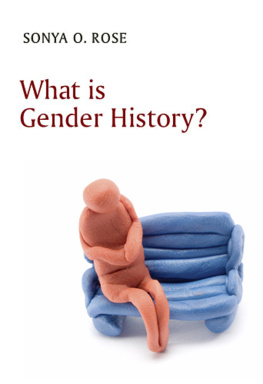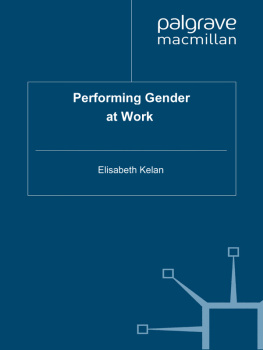SHAPING WOMEN'S WORK:
GENDER, EMPLOYMENT AND
INFORMATION TECHNOLOGY
LONGMAN SOCIOLOGY SERIES
Series Editor:
ROBERT BURGESS, University of Warwick
Editorial Advisors:
JOE BAILEY, Kingston University
ANGELA GLASNER, Oxford Brookes University
CLAIRE WALLACE, Central European University
Published Titles:
Social Europe
Joe Bailey (ed.)
Frontiers of Identity
Robin Cohen
Women and Career
Julia Evetts
Poverty and Wealth
John Scott
Disability and Society
Len Barton (ed.)
Forthcoming Titles:
Patterns of Inequality
Huw Beynon and Pandeli Glavanis
LONGMAN SOCIOLOGY SERIES
Shaping Women's Work:
Gender, Employment and
Information Technology
Juliet Webster
First published 1996 Addison Wesley Longman Limited
Published 2013 by Routledge
2 Park Square, Milton Park, Abingdon, Oxon OX14 4RN
711 Third Avenue, New York, NY 10017, USA
Routledge is an imprint of the Taylor & Francis Group, an informa business
Copyright 1996 Taylor & Francis.
All rights reserved. No part of this book maybe reprinted or reproduced or utilised in any form or by any electronic, mechanical, or other means, now known or hereafter invented, including photocopying and recording, or in any information storage or retrieval system, without permission in writing from the publishers.
Notices
Knowledge and best practice in this field are constantly changing. As new research and experience broaden our understanding, changes in research methods, professional practices, or medical treatment may become necessary.
Practitioners and researchers must always rely on their own experience and knowledge in evaluating and using any information, methods, compounds, or experiments described herein. In using such information or methods they should be mindful of their own safety and the safety of others, including parties for whom they have a professional responsibility.
To the fullest extent of the law, neither the Publisher nor the authors, contributors, or editors, assume any liability for any injury and/or damage to persons or property as a matter of products liability, negligence or otherwise, or from any use or operation of any methods, products, instructions, or ideas contained in the material herein.
ISBN 13: 978-0-582-21810-9 (pbk)
British Library Cataloguing-in-Publication Data
A catalogue record for this book is
available from the British Library
Library of Congress Cataloging-in-Publication Data
Webster, Juliet.
Shaping women's work: gender, employment, and information technology /
Juliet Webster.
p. cm. (Longman sociology series)
Includes bibliographical references and index.
ISBN 0-582-21811-X (cloth). ISBN 0-582-21810-1 (pbk.)
1. Sex role in the work environment. 2. WomenEffect of technological
innovations on. 3. Information technology.
I. Title. II. Series.
HD6060.6.W43 1996
331.4dc20 96-459
CIP
Phototypeset by 20 in Times 10/11 pt
Dedicated to Moyra
A most extraordinary woman
and a very dear friend
The Longman Sociology series is a new series of books which are written specifically for first and second year undergraduate students. Each title covers one key area of sociology and aims to supplement the traditional standard text.
The series is forward looking and attempts to reflect topics that will be included in syllabuses for sociology and social policy in the 1990s. It provides a range of volumes that bring together conceptual and empirical material. In addition, volumes in the series also examine key controversies and debates drawing on commentaries using conceptual and empirical material from a range of authors.
Each volume in the series whether authored or edited, will cover an area that would be commonly found in sociology and social policy syllabuses. The focus of each volume will be upon theoretically informed empirical work with policy relatedness.
The volumes are intended for an international audience and therefore comparative material is introduced where appropriate in a form that will be suitable for first and second year students.
There is now a range of writing that contributes to debates about women's work. In this volume Juliet Webster extends the discussion through an analysis of information technologies in relation to women's employment and women's work. Her contribution to this area of study will stimulate the debate among students, teachers and researchers in sociology.
Robert G Burgess,
University of Warwick
I could not have begun this book, never mind completed it, without the freedom of a sabbatical from my day job in the Department of Innovation Studies at the University of East London. During this period, I was able to read, think, write and consult my colleagues around the world about the material in the book, and I benefited enormously from such a concentrated period of study. This meant, though, that my colleagues at the University already very heavily committed people had to cover my duties for a semester, and I am indebted to them for giving me the opportunity to work on this book.
I also received much help and encouragement from Sarah Caro at Longman, and from colleagues and friends in other institutions who discussed ideas with me, or read and commented upon drafts of this book. I particularly want to acknowledge the support of Ruth Carter, Cynthia Cockburn, Clair Drew, Gavin Poynter and Marja Vehvilinen. All these people gave considerable time and expertise to this book, and I thank them very warmly.
Then, in the domestic sphere, my partner, Roger, nurtured me through the writing of this book, and was patient and caring during my long periods of immersion in the subject of women, employment and information technology. He must be the most gender-and-technology-minded geologist in the world, and I thank him very much for his sweet supportiveness.
When I trained and then went to work as a secretary in the late 1970s, the technologies of office work were entirely electrical, mechanical or manual. Electric typewriters, addressographs, roneo stencils and shorthand pads were the most advanced technologies I encountered; these were the typical paraphernalia of my job in an office. But even as I was training and learning to use these devices, the world was on the brink of a period of widespread technological change. Information and communication technologies were being ushered in and the face of the workplace was changing profoundly. Word processors, personal computers, electronic photocopiers, fax machines, and computer-based systems of many other kinds are the tools with which we now all work today, not only in offices but throughout the entire economy.
This book represents my assessment of the changes which have taken place in the workplaces of women since these technologies were developed and given application, and of women's place in their development and application. Although my early working life was lived as a secretary, my subsequent employment has been as a researcher and teacher concerned with the social relations and dynamics of information and communications technologies. In one way or another, then, these technologies have been at the centre of my own existence as a woman for some years now. They have been at the centre of many other working women's existences, too. My own experiences, as well as the research of others, inevitably therefore inform and appear in this book.







